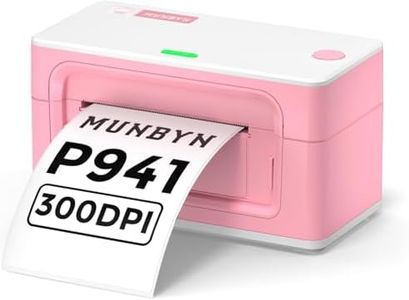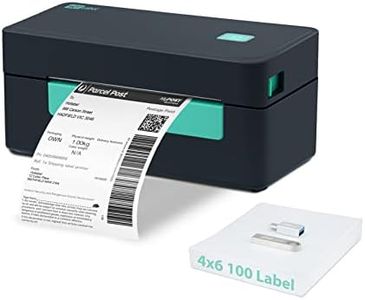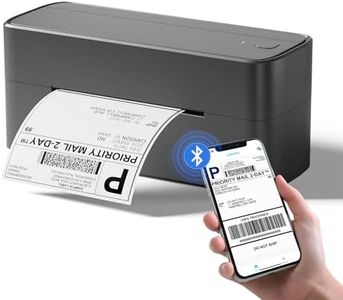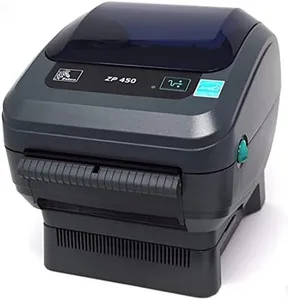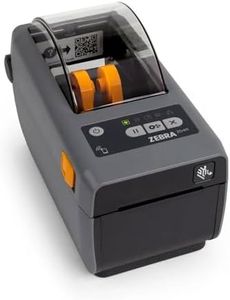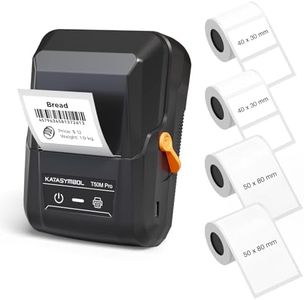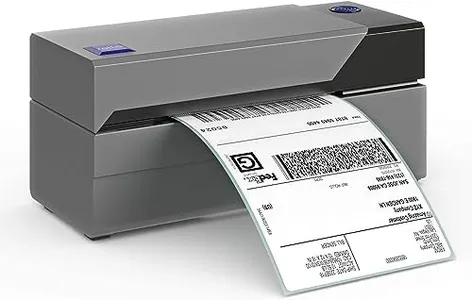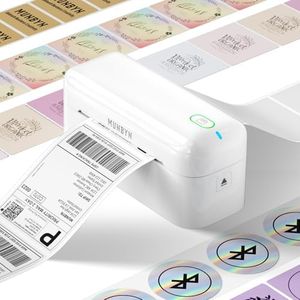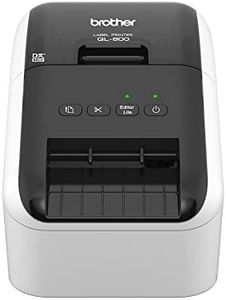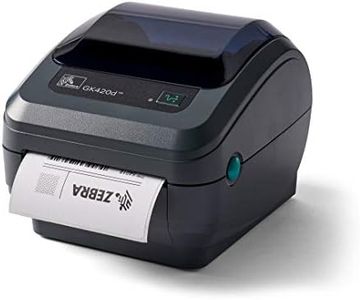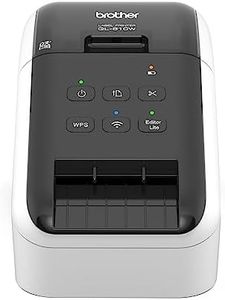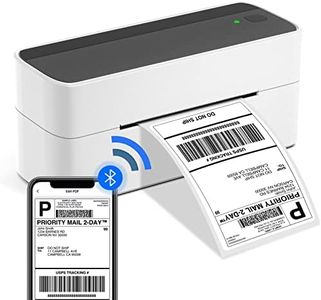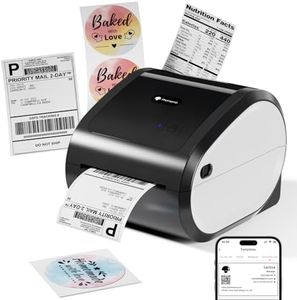We Use CookiesWe use cookies to enhance the security, performance,
functionality and for analytical and promotional activities. By continuing to browse this site you
are agreeing to our privacy policy
10 Best Thermal Label Printers
From leading brands and best sellers available on the web.Buying Guide for the Best Thermal Label Printers
Choosing a thermal label printer can feel overwhelming with the range of options available, but the process becomes much simpler if you focus on your specific needs and daily usage. Start by considering how you plan to use the printer, such as for shipping, barcoding, organizing, or product labeling. Think about the volume of labels you'll print each day, the size and type of labels you need, and where the printer will be placed in your workspace. Paying attention to the key specifications will help you select a printer that is fast, reliable, and fits your workflow without buying features you don't need.Print Resolution (DPI)Print resolution, measured in DPI (dots per inch), describes how sharp and clear your printed labels will appear. Higher DPI means more detail and better print quality, which is important if you include logos, small fonts, or barcodes that need to be scanned reliably. You’ll find common segments like 203 DPI (standard for addresses or shipping), 300 DPI (better for small text or barcodes), and even 600 DPI (for very high-detail labels). If your labels are simple or mainly text, a lower DPI is fine. If you need clear graphics, tiny text, or crisp barcodes, aim for higher DPI.
Print SpeedPrint speed tells you how quickly the printer can produce your labels, often given in inches or millimeters per second. Faster speeds are helpful in busy environments where you print lots of labels each day, but very high speeds sometimes reduce print quality. Typical speeds range from about 2 to 8 inches per second. For occasional or low-volume printing, standard speeds are perfectly adequate, while higher speeds make sense if you consistently print large batches and need efficiency.
Label Size CompatibilityThe maximum and minimum label width and length the printer supports will determine what types of labels you can use. Some printers are designed for small, narrow labels, while others can handle wide shipping labels. Consider what you’ll be printing—if it’s mainly address or shipping labels, make sure your printer can handle the common 4x6 inch format; for smaller barcode or product labels, check the minimum supported dimensions. Picking a printer that fits your typical label size ensures flexibility for your tasks.
Connectivity OptionsConnectivity refers to how the printer links to your computer or network, such as via USB, Ethernet (wired network), WiFi, or Bluetooth. USB is common and simple for single-user use, while Ethernet or WiFi allows multiple users or flexible placement in a shared workspace. Bluetooth offers cable-free printing from mobile devices. Think about where and how you’ll use the printer—home, office, or warehouse—and choose the connectivity that matches your setup for hassle-free operation.
Thermal Printing Method (Direct vs. Thermal Transfer)Thermal label printers generally use either direct thermal or thermal transfer technology. Direct thermal printing uses heat-sensitive labels and doesn’t require ink or ribbons, making it simple and low-maintenance, but labels may fade over time or with heat and sunlight exposure. Thermal transfer uses a ribbon and makes more durable, long-lasting labels suited for products or outdoor use. Decide based on your durability needs: direct thermal is ideal for temporary labels like shipping, while thermal transfer is best for archival or harsh environments.
Supported Operating Systems & SoftwareIt's important to check that the printer supports your computer's operating system and the label creation software you plan to use. Some models work with Windows, macOS, or even mobile apps, and offer compatibility with popular shipping or e-commerce platforms. If you want easy setup and integration, look for broad OS support and good included label design software. Make sure the printer you choose fits smoothly with your own devices and workflow.
Label Roll CapacityThe roll capacity tells you how many labels can be loaded into the printer at once. Larger roll capacity means fewer interruptions to reload labels, which is especially valuable for high-volume printing tasks. For moderate or occasional use, standard capacities are sufficient, but if you plan to print continuously or in bulk, choosing a printer that fits larger rolls will save time and improve convenience.
